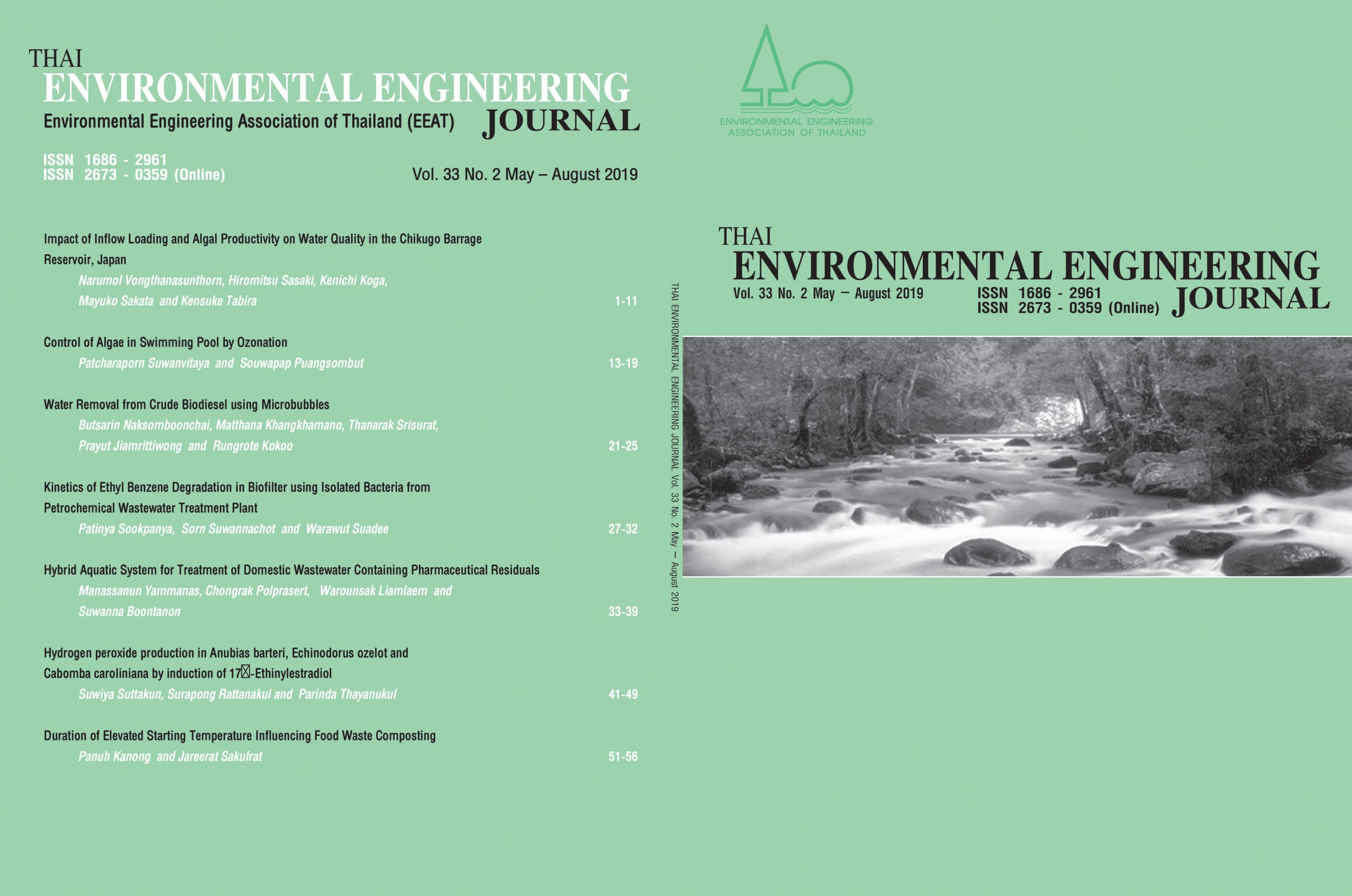Hybrid Aquatic System for Treatment of Domestic Wastewater Containing Pharmaceutical Residuals
Main Article Content
Abstract
This experimental research aimed to study the efficiencies of wastewater treatment and reducing pharmaceutical residuals by a hybrid aquatic system. Four laboratory-scale reactors, each filled duckweeds of 0.63 kg/m2, were operated at the organic loading rate (OLR) of 12-50 kg COD/(ha-day) and illuminated with red LED at the light intensity of 150 µmol/(m2-sec). Three reactors, each filled with plastic media at the specific area of 50 m2/m3, were fed with domestic wastewater at the hydraulic retention times (HRTs) of 5, 10 and 20 days; the fourth reactor was operated at the HRT of 10 days, but without plastic media. The experimental results showed the COD removal efficiency of 36.11, 40.74 and 76.85% at HRTs of 5, 10 and 20 days, respectively; while the reactor without plastic media had less COD removal efficiency. The hybrid aquatic system was also effective in removing sulfamethoxazole, a common anti-biotic drug, from the influent wastewater about 99%.
Article Details
References
[2] Krishna, B. & Polprasert, C. 2008. An integrated kinetic model for organic and nutrient removal by duckweed-based wastewater treatment (DUBWAT) system. Ecological Engineering. 34: 243-250.
[3] Wilart Rattananukoon. 2010. Duckweed. Retrieved from https://biology.ipst.ac.th/?p=880 [2018, September 29] (in Thai)
[4] Chongrak Polprasert, Variga Sawaittayotin, and Tatchai Pussayanavin. 2015. Contamination of water resources in Thailand by pharmaceutical and personal care products. The Journal of the Royal Society of Thailand. 40(4): 106-115.
[5] Polprasert, C & Koottatep, T. 2017. Organic waste recycling: technology, management and sustainability. 4th ed. London: IWA Publishing.
[6] Zhang, Q., Agatha, S., Zhang, W., et al. 2017. Three rDNA loci‐based phylogenies of tintinnid ciliates (Ciliophora, Spirotrichea, Choreotrichida). Journal of Eukaryotic Microbiology. 64(2): 226–241.


